Discover 11 hidden attractions, cool sights, and unusual things to do in Arnside and Silverdale (United Kingdom). Don't miss out on these must-see attractions: Warton Crag, Leighton Hall, and Arnside Tower. Also, be sure to include St Oswald's Church in your itinerary.
Below, you can find the list of the most amazing places you should visit in Arnside and Silverdale (England).
Table of Contents
Warton Crag
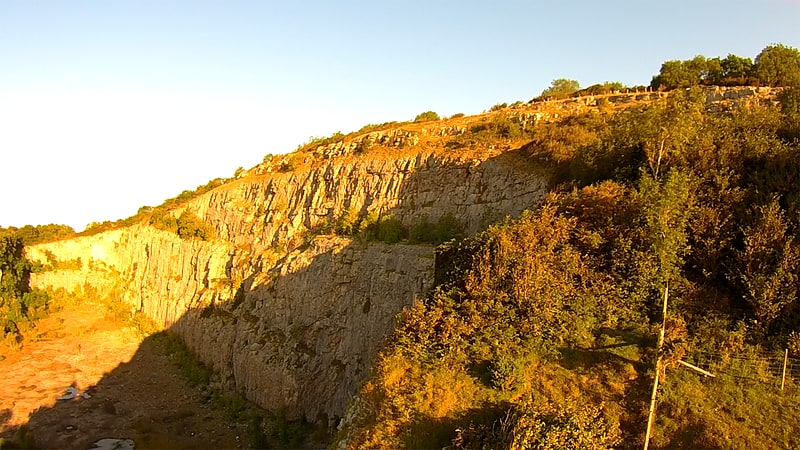
Nature preserve in Warton, England. Warton Crag is a limestone hill in north west Lancashire, England. It lies to the north west of Warton village, in City of Lancaster district. At 163 metres it is the highest point in the Arnside and Silverdale Area of Outstanding Natural Beauty, and is listed as a "HuMP" or "Hundred Metre Prominence", having a "drop" or "prominence" of 126 metres with its parent being Hutton Roof Crags. Two areas are Local Nature Reserves, called Warton Crag and Warton Crag Quarry. Different sections are owned by Lancashire County Council, the Wildlife Trust for Lancashire, Manchester and North Merseyside, Lancaster City Council and the Royal Society for the Protection of Birds.
Two caves on the west side of the hill called Dog Holes and Badger Hole show signs of early human occupation, with excavations finding a range of artefacts.
The summit of the hill is the site of a small multivallate hillfort, which has long been assumed to date to the Iron Age period. The approximately 3.2-hectare (7.9-acre) enclosure was defended by rock scarps and steep slopes to the south and west with triple stone ramparts forming an arc on the other sides. However research by Historic England in 2016 using lidar proposed that the structure was instead "some form of non-defensive hilltop enclosure, possibly dating to the Late Bronze Age."
Many plants are found on the crag, including horseshoe vetch near its northern limit, spindle tree and many ferns. The site is rich in butterflies, including the rare pearl bordered fritillary and high brown fritillary. Much of the hill is listed as a Site of Special Scientific Interest, being considered the best example of limestone grassland in Lancashire, with areas of Limestone pavement.
The former quarry on the west of the crag is a regular breeding site for peregrine falcons and is protected by a Falcon Watch team of volunteers.
The crag is used by rock-climbers, and a fell race on the crag takes place annually as part of Warton Children's Sports Day.[1]
Address: Warton Crag, Arnside and Silverdale
Leighton Hall
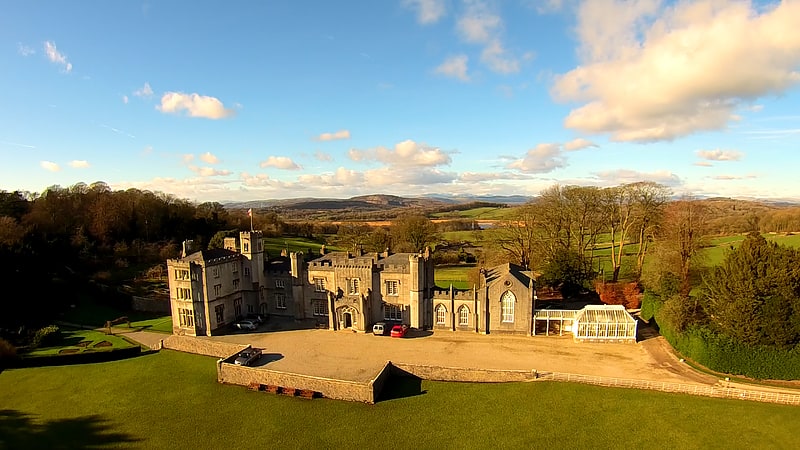
Building in Lancashire, England. Leighton Hall is a historic house 0.5 miles to the west of Yealand Conyers, Lancashire, England. It is recorded in the National Heritage List for England as a designated Grade II* listed building.[2]
Arnside Tower
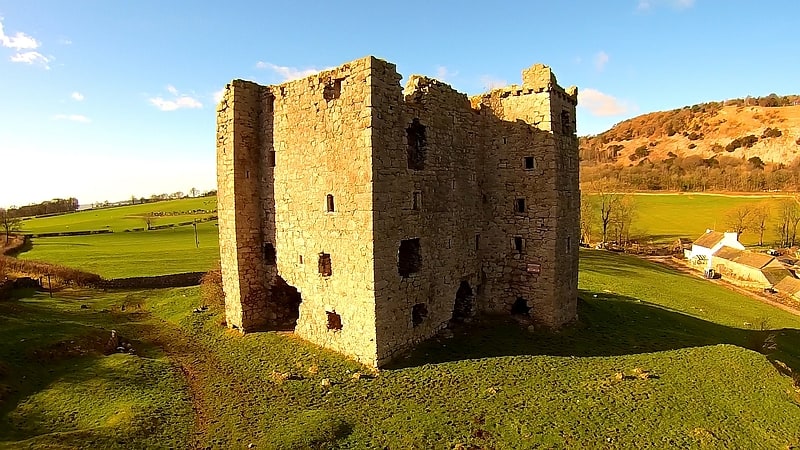
Historical place in Far Arnside, England. Arnside Tower is a late-medieval tower house between Arnside and Silverdale immediately to the south of Arnside Knott in Cumbria, England.[3]
St Oswald's Church
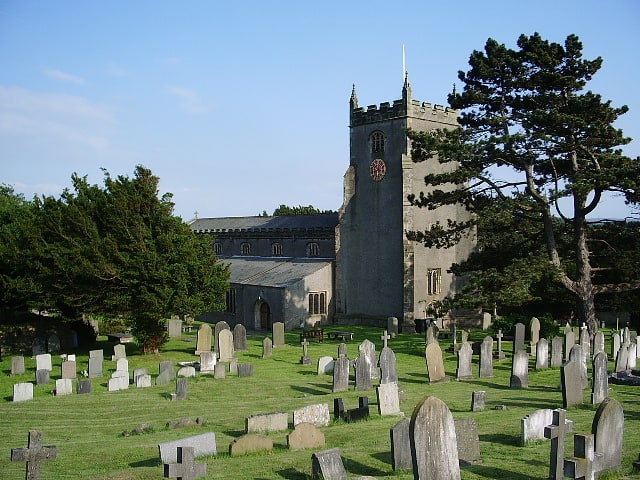
Church in Warton, England. St Oswald's Church is in the village of Warton, Lancashire, England. It is an active Anglican parish church in the deanery of Tunstall, the archdeaconry of Lancaster, and the diocese of Blackburn. Its benefice is united with those of St Mary, Borwick and St John the Evangelist, Yealand Conyers. The church is recorded in the National Heritage List for England as a designated Grade II listed building. The ruined remains of the medieval rectory survive next to the present vicarage to the west of the church.[4]
St Michael's Church
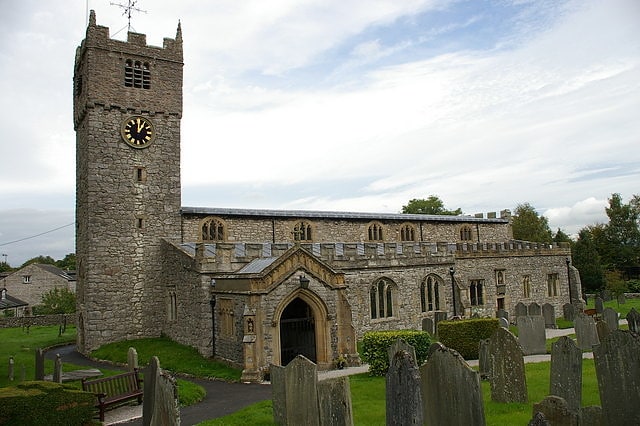
St Michael's Church is in the village of Beetham, Cumbria, England. It is an active Anglican parish church in the deanery of Kendal, the archdeaconry of Westmoreland and Furness, and the diocese of Carlisle. The church is recorded in the National Heritage List for England as a designated Grade I listed building.[5]
St Mary's Church
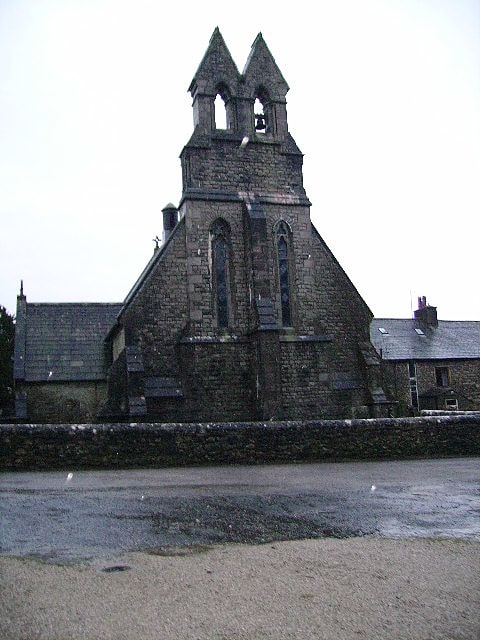
Catholic church in Yealand Conyers, England. St Mary's Church is in the village of Yealand Conyers, Lancashire, England. It is an active Roman Catholic church in the diocese of Lancaster, and is linked with the churches of St Mary of the Angels, Bolton-le-Sands, and Our Lady of Lourdes, Carnforth. The church is recorded in the National Heritage List for England as a designated Grade II listed building. It stands at the south end of the village.[6]
Address: 2 Yealand Rd, LA5 9SF Carnforth
Hyning Scout Wood
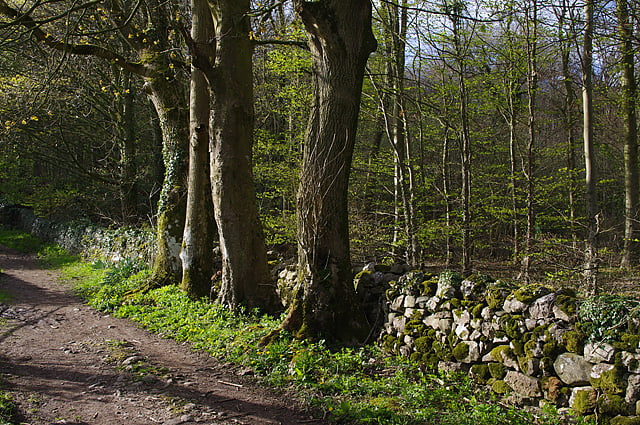
Hyning Scout Wood is a wood between Yealand Conyers and Warton in Lancashire.
Its features include limestone pavement and coppicing for charcoal. The trees include beech, larch, sweet chestnut and Scots pine. Its woodland plants include bluebells, dog's mercury, hart's-tongue fern and Solomon's Seal. Roe deer and both grey and red squirrels are found there.
It is managed by the Woodland Trust; is part of the Arnside and Silverdale Area of Outstanding Natural Beauty and is recognised as a Biological Heritage Site by the county. The wood contains a memorial plaque for anthropologist Mary Gluckman.[7]
Borwick Hall

Building in England. Borwick Hall is a 16th-century manor house at Borwick, Lancashire, England. It is a Grade I listed building and is now used as a residential outdoor education and conference centre by Lancashire County Council.[8]
Address: Arnside and Silverdale, Borwick Lane, Borwick, Lancashire
Three Brothers

The Three Brothers are three erratic boulders or standing stone hilltop altars located in the hills above Morecambe Bay, immediately north of Warton Crag. The site was surveyed by Alexander Thom. It is accessible along a footpath through woodland.[9]
Old Rectory

Heritage building in Warton, England. The Old Rectory is a ruin of a former rectory in the village of Warton, near Lancaster, Lancashire, England. Owned by English Heritage, it has been designated a Scheduled Ancient Monument and Grade I listed building.
The rectory is believed to have been built in the early 14th century as the residence of the rector of the parish of St Oswald's, Warton, probably by two younger sons of Marmaduke, Lord Thweng. Manorial courts were also held here. The walls are of limestone rubble with sandstone dressings, and a cross passage originally separated the full-height great hall on the southern side from service rooms and a first floor chamber at the other end of the house. The doorway at the eastern end of the cross passage is interpreted as the main entrance, while the western one led into a garden, and both originally had a porch. A doorway in the northern gable wall led into a courtyard with an external kitchen and a well. In the south-west corner of the great hall is a doorway that led to another building which survives as part of the modern vicarage. The southern gable had an ogee quatrefoiled window under the apex to provide light.
It is not known exactly when the rectory was abandoned, after being replaced by a new rectory, but it was a ruin by 1721. Some time later, a cottage was constructed in the north end of the ruin, which was occupied well into the 20th century, however these additions have since been removed. The ruin is considered to be well preserved, with the gables surviving to almost their full height. It is open to visitors, free of charge.[10]
Address: Main Street, LA5 9PH Warton
Silverdale Hoard
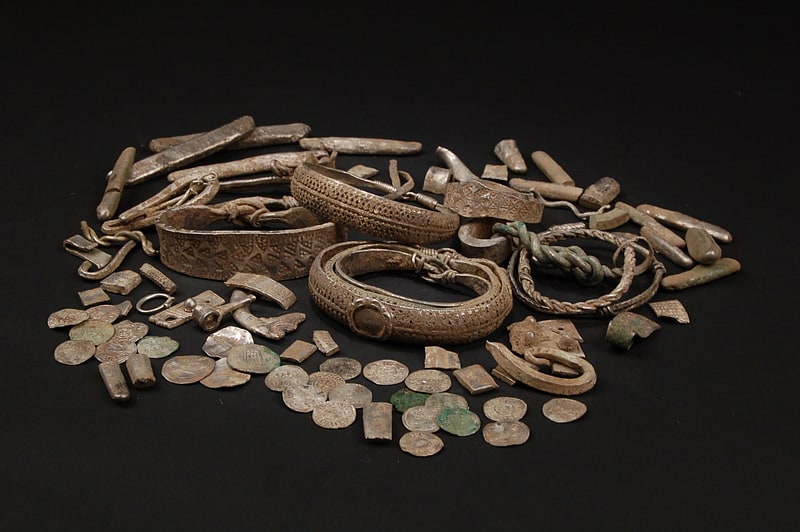
The Silverdale Hoard is a collection of over 200 pieces of silver jewellery and coins discovered near Silverdale, Lancashire, England, in September 2011. The items were deposited together in and under a lead container buried about 16 inches underground which was found in a field by a metal detectorist. It is believed to date to around AD 900, a time of intense conflict between the Anglo-Saxons and the Danish settlers of northern England. The hoard is one of the largest Viking hoards ever discovered in the UK. It has been purchased by Lancashire Museums Service and has been displayed at Lancaster City Museum and the Museum of Lancashire in Preston. It is particularly significant for its inclusion of a coin stamped with the name of a previously unknown Viking ruler.[11]